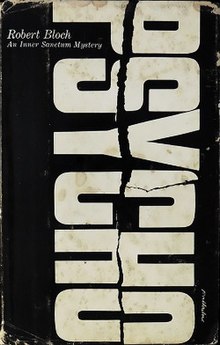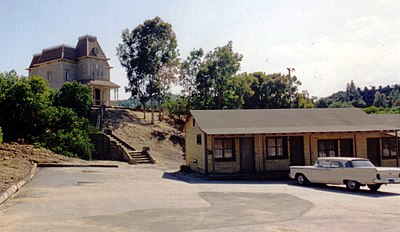
Psycho is a 1960 American horror film produced and directed by Alfred Hitchcock. The screenplay, written by Joseph Stefano, was based on the 1959 novel of the same name by Robert Bloch. The film stars Anthony Perkins, Janet Leigh, Vera Miles, John Gavin, and Martin Balsam. The plot centers on an encounter between on-the-run embezzler Marion Crane (Leigh) and shy motel proprietor Norman Bates (Perkins) and its aftermath, in which a private investigator (Balsam), Marion's lover Sam Loomis (Gavin), and her sister Lila (Miles) investigate her disappearance.
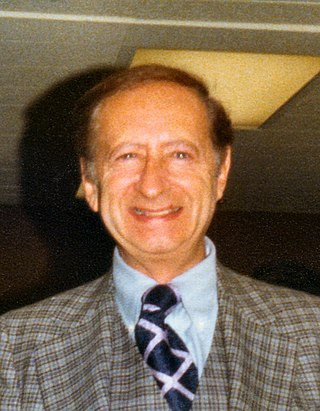
Robert Albert Bloch was an American fiction writer, primarily of crime, psychological horror and fantasy, much of which has been dramatized for radio, cinema and television. He also wrote a relatively small amount of science fiction. His writing career lasted 60 years, including more than 30 years in television and film. He began his professional writing career immediately after graduation from high school, aged 17. Best known as the writer of Psycho (1959), the basis for the film of the same name by Alfred Hitchcock, Bloch wrote hundreds of short stories and over 30 novels. He was a protégé of H. P. Lovecraft, who was the first to seriously encourage his talent. However, while he started emulating Lovecraft and his brand of cosmic horror, he later specialized in crime and horror stories working with a more psychological approach.
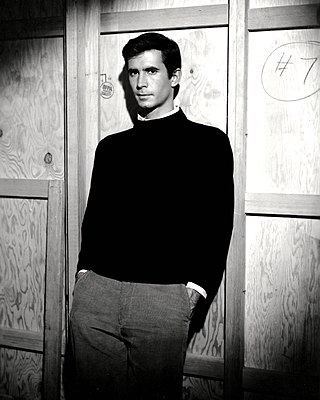
Norman Bates is a fictional character created by American author Robert Bloch as the main protagonist in his 1959 horror novel Psycho. He has an alter, Mother, who takes from the form of his abusive mother, and later victim, Norma, who in his daily life runs the Bates Motel.
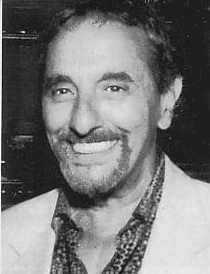
Joseph William Stefano was an American screenwriter, known for adapting Robert Bloch's novel as the script for Alfred Hitchcock's film Psycho, and for being the producer and co-writer of the original The Outer Limits television series.
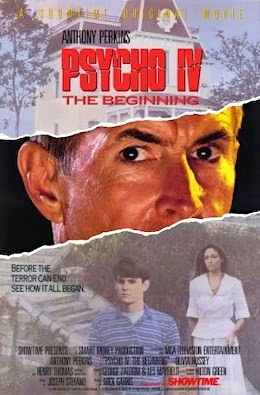
Psycho IV: The Beginning is a 1990 American made-for-television slasher film directed by Mick Garris, and starring Anthony Perkins, Henry Thomas, Olivia Hussey, Warren Frost, Donna Mitchell, and CCH Pounder. It serves as both the third sequel and a prequel to Alfred Hitchcock's Psycho, focusing on the early life of Norman Bates and the flashbacks that took place prior to the events of the original film. It is the fourth and final film in the original Psycho franchise, and Perkins' final appearance in the series before his death in 1992.
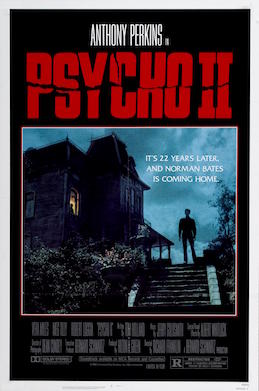
Psycho II is a 1983 American psychological slasher film directed by Richard Franklin, written by Tom Holland, and starring Anthony Perkins, Vera Miles, Robert Loggia, and Meg Tilly. It is the first sequel to Alfred Hitchcock's 1960 film Psycho and the second film in the Psycho franchise. Set 22 years after the first film, it follows Norman Bates after he is released from the mental institution and returns to the house and Bates Motel to continue a normal life. However, his troubled past continues to haunt him as someone begins to murder the people around him. The film is unrelated to the 1982 novel Psycho II by Robert Bloch, which he wrote as a sequel to his original 1959 novel Psycho.

Psycho III is a 1986 American slasher film, and the third film in the Psycho franchise. It stars Anthony Perkins, who also directs the film, reprising the role of Norman Bates. It co-stars Diana Scarwid, Jeff Fahey, and Roberta Maxwell. The screenplay is written by Charles Edward Pogue. The original electronic music score is composed and performed by Carter Burwell in one of his earliest projects. Psycho III is unrelated to Robert Bloch's third Psycho novel, Psycho House, which was released in 1990.

Bates Motel is a 1987 American made-for-television supernatural horror film and a spin-off of the Psycho franchise written and directed by Richard Rothstein, starring Bud Cort, Lori Petty, Moses Gunn, Gregg Henry, Jason Bateman, and Kerrie Keane. Outside of the 1998 remake, this is the only installment not to feature Anthony Perkins as Norman Bates as Kurt Paul portrays the character. The film premiered on July 5, 1987. It is a direct sequel to Psycho, ignoring the other sequels.

Psycho is a 1998 American psychological horror film produced and directed by Gus Van Sant, and starring Vince Vaughn, Julianne Moore, Viggo Mortensen, William H. Macy, and Anne Heche. It is a modern remake of Alfred Hitchcock's 1960 film of the same name, in which an embezzler arrives at an old motel run by a mysterious man named Norman Bates; both films are adapted from Robert Bloch's 1959 novel.

Psycho is an American horror franchise consisting of six films loosely based on the Psycho novels by Robert Bloch: Psycho, Psycho II, Psycho III, Bates Motel, Psycho IV: The Beginning, the 1998 remake of the original film, and additional merchandise spanning various media. The first film, Psycho, was directed by filmmaker Alfred Hitchcock. Subsequently, another film related to the series was made: an Alfred Hitchcock biopic, and two new novels, by Takekuni Kitayama and Chet Williamson, were released. Also, an independent documentary called The Psycho Legacy was released on October 19, 2010, mostly focusing on Psycho II, Psycho III and Psycho IV: The Beginning, while covering the impact and legacy of the original film.
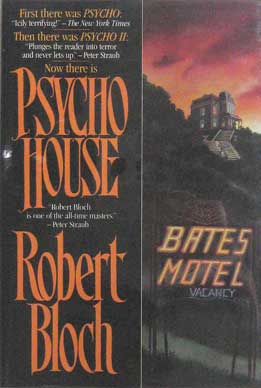
Psycho House is a 1990 novel by American writer Robert Bloch. It is a sequel to the 1959 novel Psycho and the 1982 novel Psycho II.
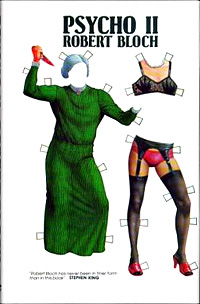
Psycho II is a 1982 novel by American writer Robert Bloch. It is a sequel to his 1959 novel Psycho. The novel was completed before the screenplay was written for the unrelated 1983 film Psycho II. According to Bloch, Universal Studios loathed the novel, which was intended to critique Hollywood splatter films. A different story was created for the film and Bloch was not invited to any screenings. Universal suggested that Bloch abandon his novel, which he declined and released anyway to good sales.

Emma Spool is a fictional character created by screenwriter Tom Holland for the 1983 film Psycho II. She serves as the primary antagonist, and is portrayed by Claudia Bryar. More attention is given to her character in Psycho III, although she only appears as a corpse.

Norma Bates is a fictional character created by American author Robert Bloch in his 1959 thriller novel Psycho. She is the deceased mother and victim of serial killer Norman Bates, who had recreated her in his mind as a murderous alternate personality.

Marion Crane, also under the alias Marie Samuels, is a fictional character created by American author Robert Bloch in his 1959 thriller novel Psycho. She is portrayed by Janet Leigh in the 1960 version of Psycho directed by Alfred Hitchcock, by Anne Heche in the 1998 version of Psycho, and by Rihanna in the television series, Bates Motel (2017). For her performance in Psycho, Leigh was nominated for Best Supporting Actress in the Academy Awards and won a Golden Globe Award in the same category.
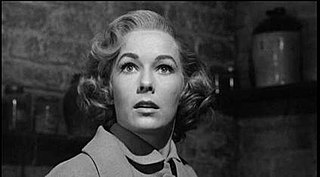
Lila Loomis is a fictional character created by American author Robert Bloch in his 1959 thriller novel Psycho; she is the sister of Norman Bates's victim Marion Crane. She is revealed as the real protagonist of the novel in the final chapters, after several false protagonists, including her sister, who gets murdered. Lila is portrayed by Vera Miles in the 1960 film version and by Julianne Moore in the 1998 version. Additionally, Lila appears in Bloch's 1982 sequel novel Psycho II, and the unrelated 1983 sequel film of the same name, in which she serves as an antagonist.

The Psycho Legacy is a 2010 American independent direct-to-video documentary film that examines the history of the Psycho film franchise and the continuing legacy of the original Psycho. It also pays a tribute to actor Anthony Perkins for his portrayal of character Norman Bates. It is written and directed by Robert Galluzzo. It includes interviews with the cast and crew who were involved in the productions of Psycho, Psycho II, Psycho III and Psycho IV: The Beginning. It also features interviews with current horror filmmakers who are fans of the Psycho series.
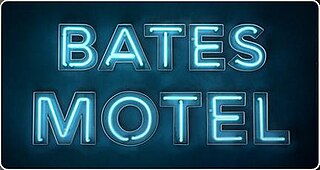
Bates Motel is an American psychological horror drama television series based on characters from the 1959 novel Psycho by Robert Bloch that aired from March 18, 2013, to April 24, 2017. It was developed by Carlton Cuse, Kerry Ehrin, and Anthony Cipriano for the cable network A&E.
Anthony S. Cipriano is an American-born writer and producer, currently based in Los Angeles. He is best known for creating the A&E drama-thriller series Bates Motel. Cipriano is also an Independent Spirit John Cassavetes Award nominee for his film 12 and Holding, directed by Michael Cuesta and starring Jeremy Renner.
